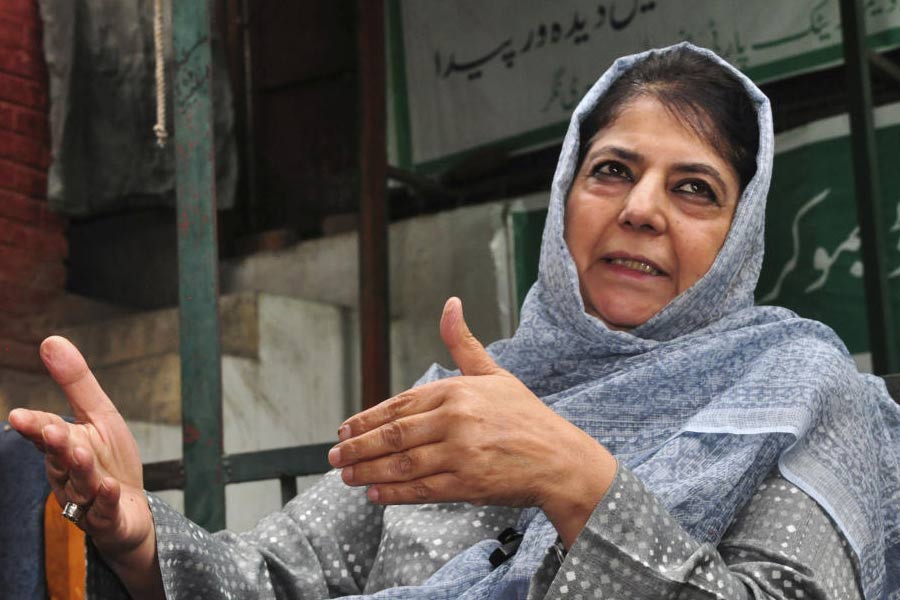Former Jammu and Kashmir chief minister Mehbooba Mufti on Wednesday said the Valley was alarmingly losing its land and water resources to unwanted development projects, calling it an assault on what remains in Kashmir after the 2019 scrapping of special status.
Mehbooba’s opposition to the projects has followed outrage from some environmentalists and also residents who are losing their land to these development activities.
The former chief minister, who heads the Peoples Democratic Party, addressed a media conference where she offered details of several projects which are reportedly devouring “lakhs of kanals of agriculture lands and lakhs of trees” and spoiling streams because of mining.
“I suspect they (government) are not satisfied with the destruction already caused by them (through the abrogation of Article 370 and related events). Now they are after what remains,” she said, accusing chief minister Omar Abdullah of doing nothing to stop it.
Mehbooba said the government was building an alternative 300km highway connecting Jammu’s Rajouri district with Baramulla.
Some media reports recently claimed the ₹3,300-crore project will pass through major tourist destinations, including Yousmarg, Doodhpathri and Charar-e-Sharief. It will partly extend to the existing Mughal road which connects Jammu’s Pir Panchal with the Valley.
Mehbooba questioned the logic of constructing “another highway”.
She opposed the proposed double-laning of the Banihal Baramulla rail line and linking several other places, including Pahalgam, to it. She said several villages in Pahalgam were losing all their land to the project.
The PDP chief said the government was building 30 satellite colonies close to the semi-ring road project around Srinagar, which will connect Gallandhar in Pulwama to Ganderabal.
Mehbooba said the project would devour 1.2 lakh kanals of land. She said the residents already faced restrictions on all types of construction on 500m stretches on both sides of several road projects.
A Jammu-based newspaper recently said the government was planning 30 satellite townships which would require 6,000 hectares of land.











